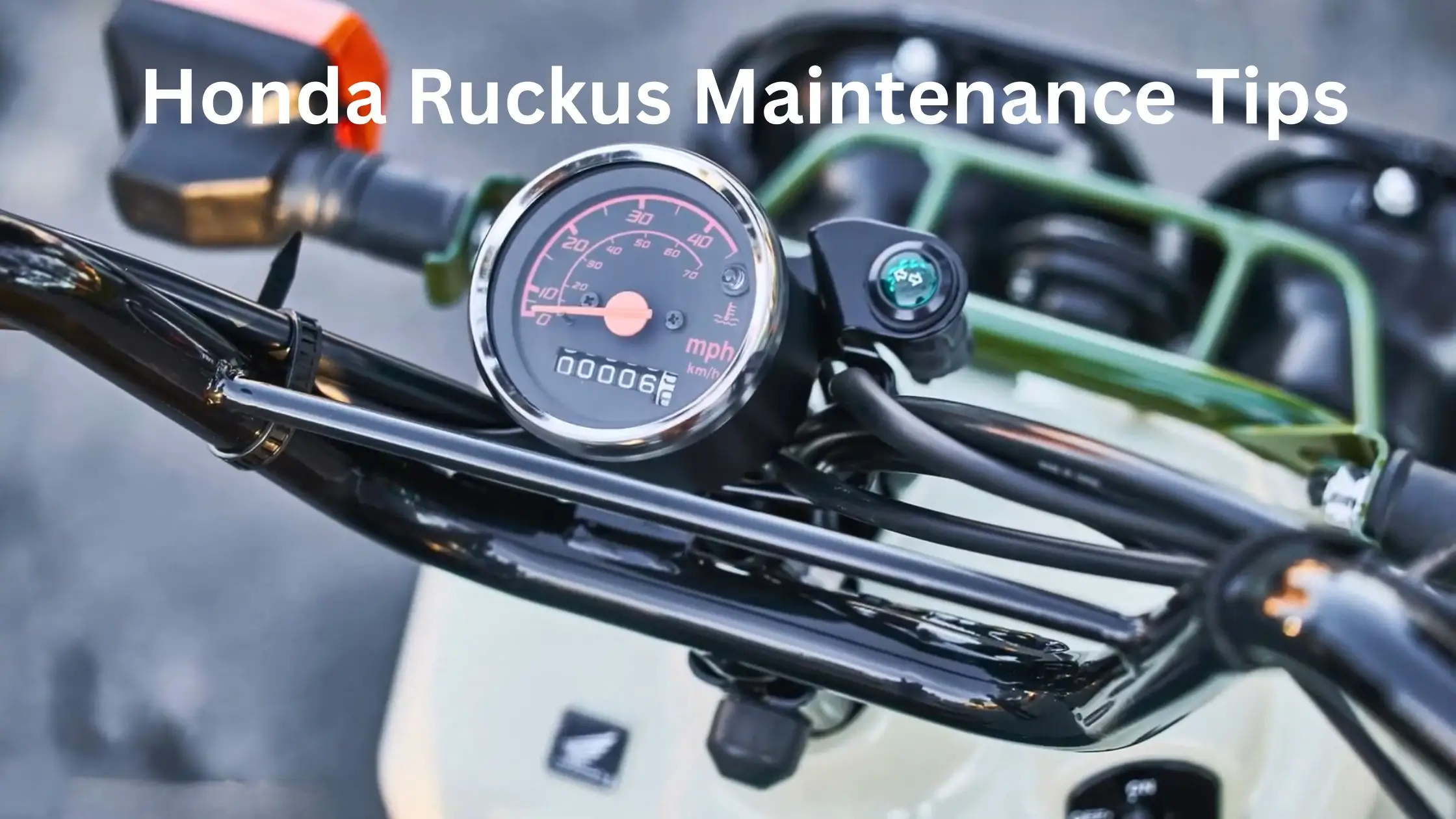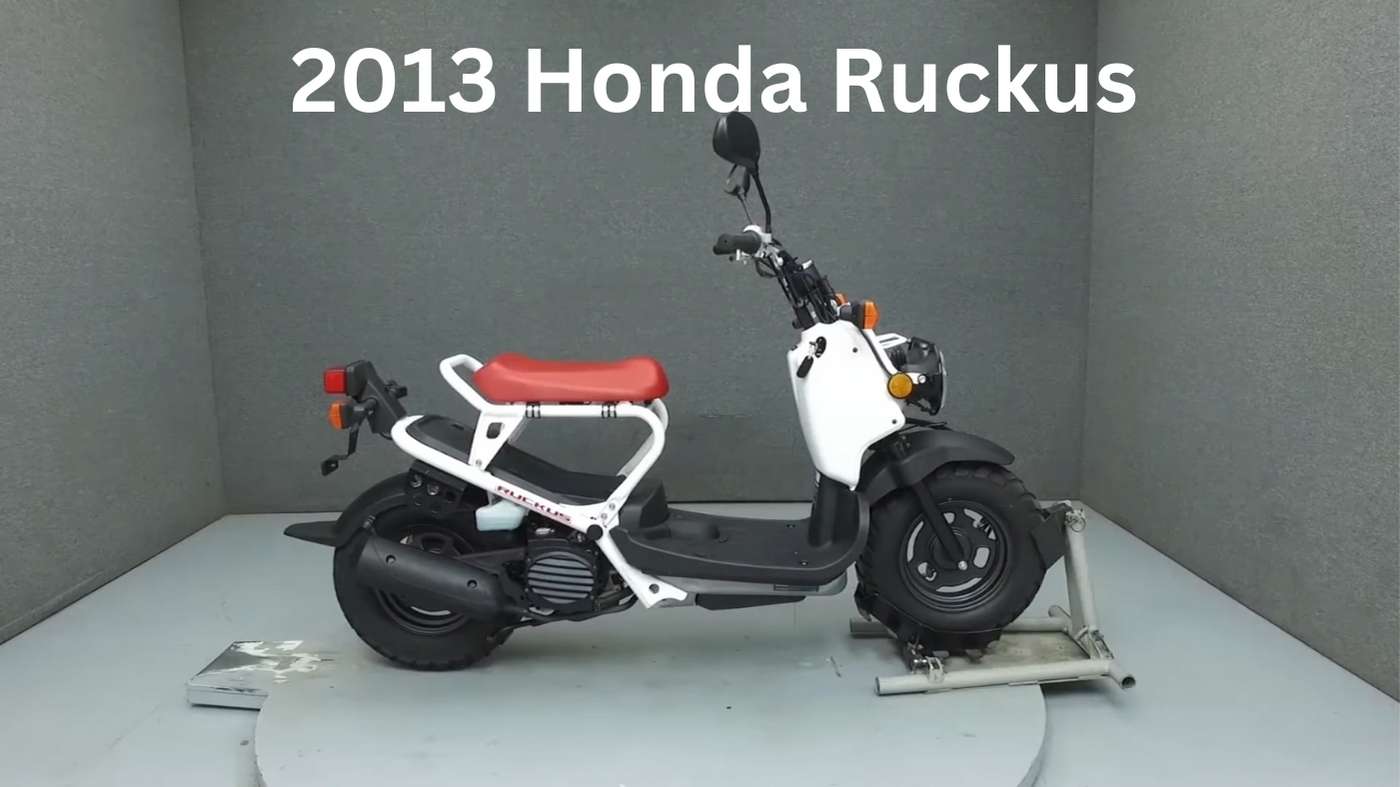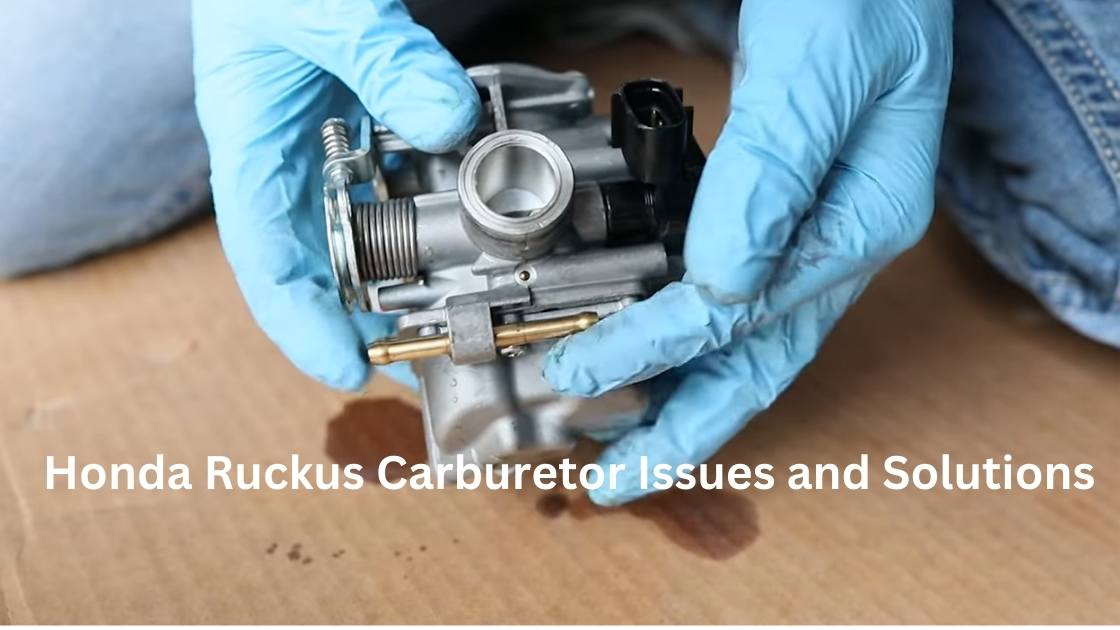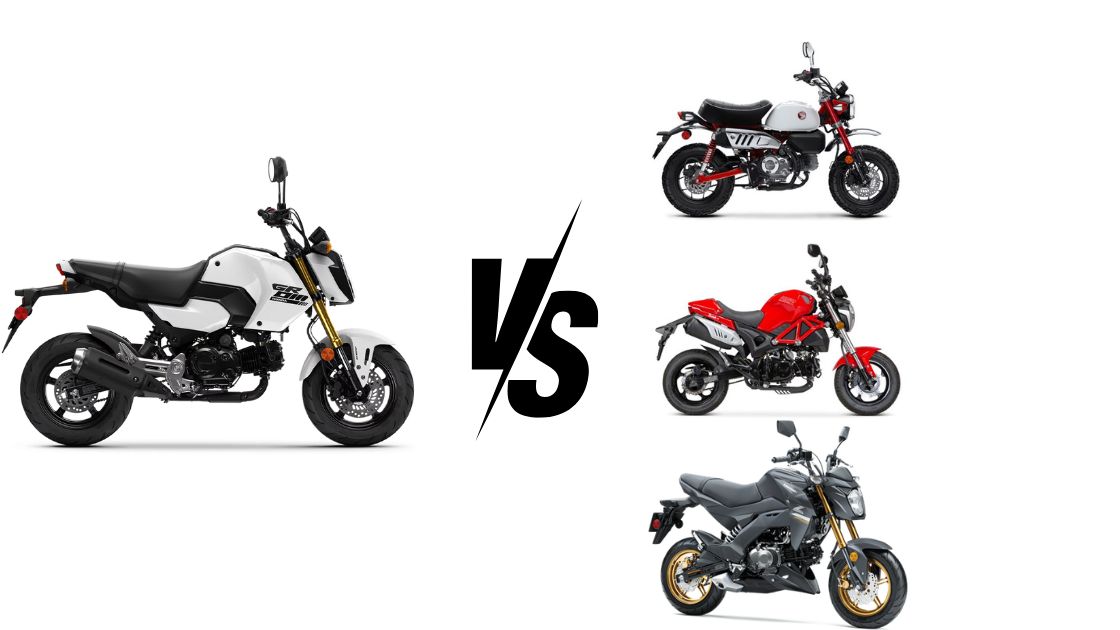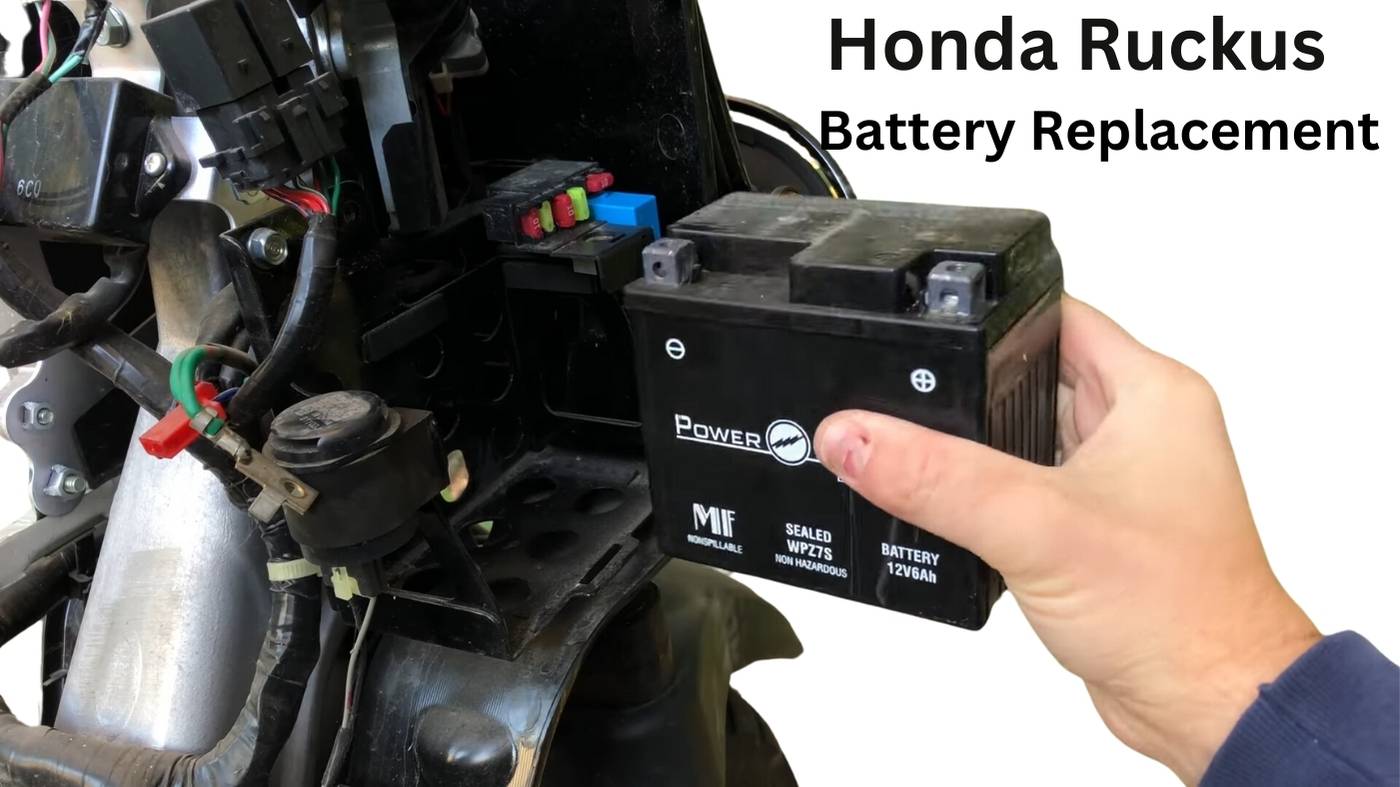If you’re the proud owner of a Honda Ruckus, you already know it’s not just a scooter—it’s a lifestyle. Here’s something I learned the hard way: even this tough little bike needs regular care to keep it working like new. If your Ruckus has trouble speeding up or the brakes feel weak when you need them, you know what I mean.
The good news? You don’t need to be a mechanic to take care of your Ruckus. With a little time and basic tools, you can handle most of the work yourself. This guide will show you how to do things like change the oil and check the tire pressure. It will help you keep your Ruckus in great shape, saving you time, money, and avoiding sudden problems. Trust me, once you get into the groove of maintaining your ride, it’ll be like second nature. Plus, there’s something really satisfying about knowing your scooter is always ready for the next adventure.
So, grab a cup of coffee, settle in, and let’s dive into everything you need to know about Honda Ruckus maintenance. Whether you’re a seasoned rider or a total beginner, this guide has got you covered.
Table of Contents
ToggleWhy Honda Ruckus Maintenance is Crucial
I’ll be honest—when I first got my Ruckus, I thought I could ride it forever without much care. It’s a Honda, right? These things are built tough. But soon, I noticed some small problems: slower speed, hard acceleration, and squeaky brakes.
That’s when I learned how important regular maintenance is. While the Ruckus needs less care than other scooters, it still needs attention. Regular care makes it run better, last longer, and saves you money on repairs.
If you’re new to scooter maintenance, don’t worry. I’ll make it easy. I’ll break things down so you can handle it, even if you’re not great with tools. This guide will help you keep your Ruckus in top shape.
Honda Ruckus Maintenance Schedule
One of the first things I had to learn was how often certain tasks needed to be done. Maintenance isn’t a one-size-fits-all deal—it depends on how you ride and where. That being said, here’s a basic maintenance schedule I follow to keep my Ruckus running like new.
| Mileage Interval | Maintenance Task | Description |
|---|---|---|
| Every 500 miles | Oil change, crush washer replacement | Keep the engine lubricated and replace the crush washer to prevent leaks. |
| Every 1,000 miles | Tire pressure check, belt inspection, brake check | Ensure optimal tire pressure, inspect belt wear, and check brake performance. |
| Every 2,000 miles | Air filter cleaning/replacement, cooling system check | Clean or replace the air filter and inspect the cooling system for blockages. |
| Every 4,000 miles | Spark plug inspection, valve adjustment | Check the spark plug for wear and adjust the valves if necessary. |
Oil Change
If there’s one thing I’ve learned, it’s that oil changes are non-negotiable. The Ruckus has a small engine, and it works hard. Keeping the oil fresh ensures that the engine stays lubricated and runs smoothly.
Personally, I’ve found that changing the oil every 500 miles works best for me. Some riders push it to 1,000 miles, but I prefer to err on the side of caution. It’s not a difficult task, and it doesn’t take much time.
How to Change the Oil:
- Warm up the engine for a few minutes. This makes the oil flow better.
- Use a 14mm wrench to remove the drain bolt located underneath the engine.
- Let the oil drain into a pan.
- Replace the crush washer behind the drain bolt (trust me, this tiny part prevents leaks).
- Reinstall the drain bolt and fill the engine with about 0.6 quarts of 10w-40 synthetic oil.
Simple, right? The hardest part is remembering to do it. But once you make it a habit, your engine will thank you with better performance.
Tire Pressure and Maintenance
When I first got my Ruckus, I didn’t think much about tire pressure. Then I noticed my fuel use was up, and the scooter felt slow. Low tire pressure can really hurt performance. The Ruckus’s tires are recommended at 20 PSI, but I found that 30 PSI works better. It makes the scooter faster and reduces resistance.
Tire Upgrades:
If you ride on the road more than off-road, smoother tires like Michelin Boopers can make your ride better. They are quieter, and you will feel less vibration, which is a nice bonus.
Check your tires every 1,000 miles and keep them properly inflated. This will help them last longer and keep you safe. Don’t skip this easy but important task.
Belt and Transmission Care
The drive belt is one of those components that’s easy to forget about—until it wears out. I learned this the hard way when my top speed suddenly dropped, and the scooter felt like it was struggling. A worn belt can sap your acceleration and top speed.
The best practice is to check the belt at 1,000-mile intervals. If you notice any fraying or cracking, it’s time to replace it. I’ve had good results with aftermarket belts from Bando and Polini—they’re durable and designed for performance.
Belt Replacement Steps:
- Remove the belt cover with a 10mm socket.
- Inspect the belt for wear. If it looks worn out, replace it.
- Reinstall the cover and you’re good to go.
This isn’t a complicated job, but keeping an eye on your belt will ensure your Ruckus performs at its best.
Air Filter and Cooling System Maintenance
I didn’t realize how important the air filter was until I noticed my Ruckus losing power. A clogged air filter restricts airflow, which makes the engine work harder and reduces fuel efficiency. It’s a simple part to maintain, but it makes a big difference.
I recommend checking the air filter every 2,000 miles, especially if you ride in dusty areas. If it’s too dirty, you can either clean it or replace it. Reusable filters are a good investment because they can be cleaned and reused multiple times.
Cooling System Tips:
The Ruckus has an air-cooled engine, so it’s important to keep the cooling fins clean. Dust and grime can block airflow, causing the engine to overheat. A soft brush or compressed air works well for cleaning the fins.
Brake Maintenance and Safety
It goes without saying, but brake maintenance is crucial for your safety. When I first noticed my Ruckus’s brakes getting worse, I didn’t think much about it. Then one day, I had to stop fast, and the brakes didn’t work as well as I expected.
Every 1,000 miles, I check my brakes to make sure they’re in good condition. Look for worn brake pads or any signs of fluid leaks. If your brakes are squeaking or feel soft, it’s time to replace the pads.
Keeping your brakes in top condition ensures you can stop on a dime when needed, and trust me, that peace of mind is worth the effort.
Battery Maintenance and Replacement
The Ruckus’s battery is small but mighty. However, like all batteries, it eventually wears out. I’ve found that keeping an eye on the battery is a simple task that can save you from a lot of headaches. A dead battery can leave you stranded, and nobody wants that.
Here’s what I do: Every few months, I check the battery terminals for corrosion and make sure the connections are tight. I also use a voltmeter to check the battery’s voltage. If it drops below 12.4 volts, it’s time to charge or replace it.
If you don’t use your Ruckus often, consider using a battery tender to keep the battery charged and healthy over long periods of non-use.
Keeping It Clean
Cleaning your Ruckus might seem unimportant, but it does more than make it look good. Regular cleaning stops rust, keeps dirt from clogging parts, and helps you find problems like leaks or loose bolts.
I make it a point to give my Ruckus a thorough clean after every couple of rides. It’s especially important if you’ve been riding in wet or dusty conditions. A clean scooter runs better, and it’s easier to spot wear and tear when you’re not dealing with a layer of grime.
Aftermarket Upgrades for Performance
If you like to push your Ruckus to the limit, you might want to try some upgrades. I’ve tested a few, and they can make your ride faster and more fun.
Popular Upgrades:
- Performance Belts: Belts from brands like Polini or Bando can help your scooter speed up and go faster. These belts work well in tough riding conditions.
- Shocks: Better shocks will make your ride smoother, especially on rough roads. The stock shocks are good, but you might want something softer for more comfort.
- Tires: As mentioned earlier, switching to smoother road tires like Michelin Boopers can make handling easier and reduce vibration. This is great for riders on paved roads.
If you want to change how your Ruckus looks, there are many choices, like new headlights, custom frames, and different seats. Keep in mind that every change can slightly affect how your scooter handles, so pick upgrades that match your riding style.
Regular Maintenance Ensures Reliability
Taking care of your Honda Ruckus may seem like a lot at first, but once you get used to it, it’s worth it. Regular oil changes, keeping your tires at the right pressure, and sometimes adding performance upgrades will keep your Ruckus running well for a long time.
From my experience, sticking to a simple maintenance routine can stop bigger problems from happening later. The best part? You’ll have peace of mind knowing your Ruckus is always ready, whether for a quick ride or a weekend trip.
So, take care of your Ruckus, and it will keep running mile after mile.
Frequently Asked Questions (FAQ)
How often should you change the oil on a Honda Ruckus?
I suggest changing the oil every 500 miles, especially if you ride in hot weather or at high RPMs. Some riders wait until 1,000 miles, but sticking to 500 miles keeps your engine in great shape.
What’s the best oil for a Honda Ruckus?
From my experience, using a 10w-40 full synthetic oil is the best choice. It offers better protection, especially if you ride in different weather or for long periods.
How often should I check the belt on a Honda Ruckus?
You should check the belt every 1,000 miles. Look for wear, like fraying or cracks. If you see any damage, replace the belt right away. This small check can prevent bigger problems later.
Do I need a license to ride a Honda Ruckus?
Licensing requirements vary depending on where you live. In many places, a motorcycle license isn’t required for scooters under 50cc, which includes the Honda Ruckus. However, I recommend checking your local laws to be sure.

